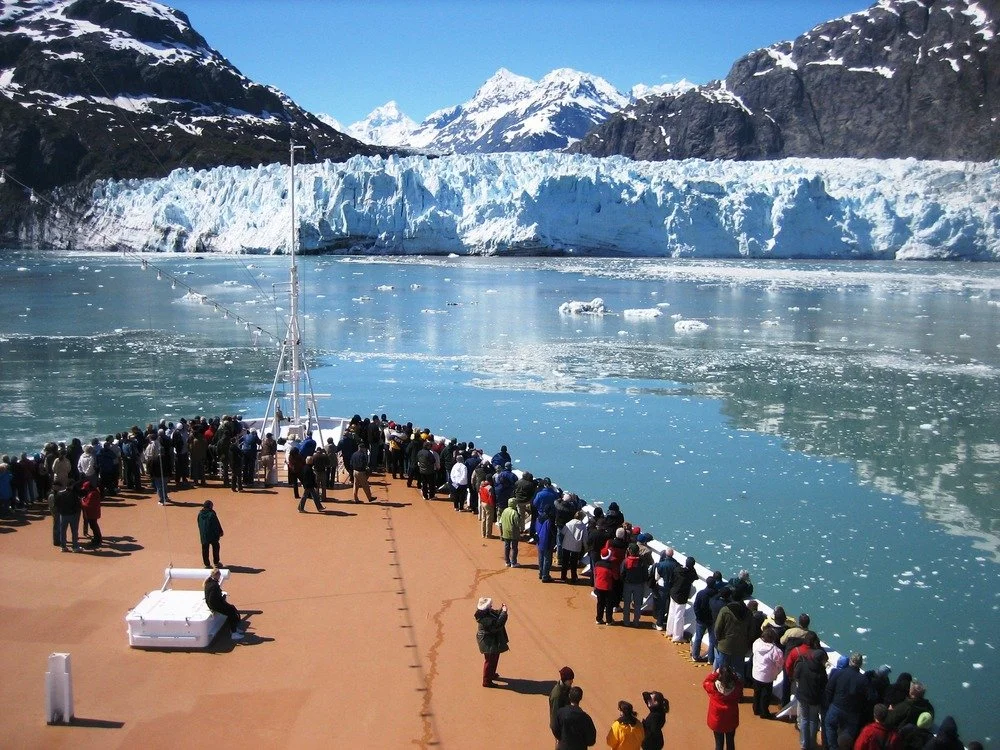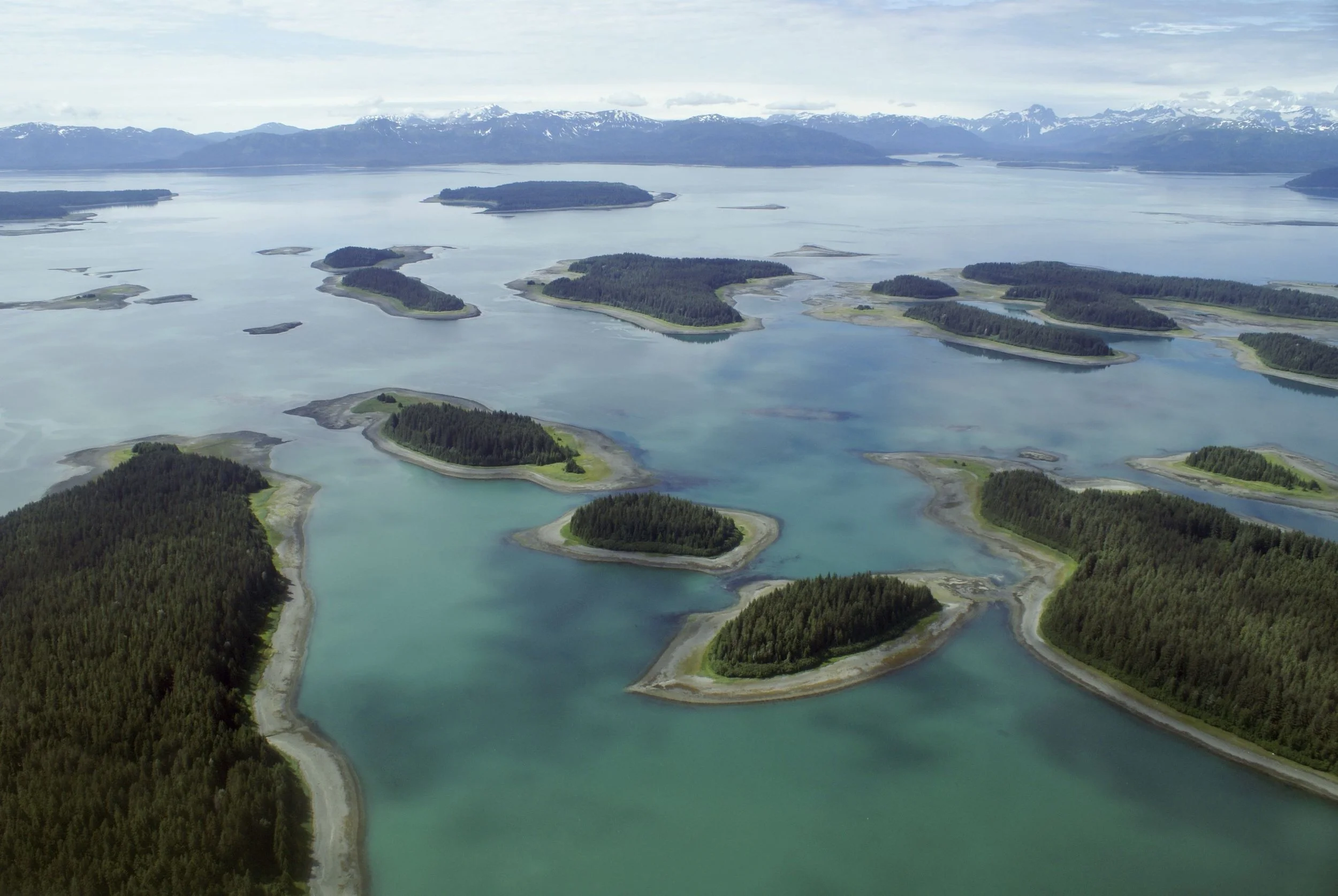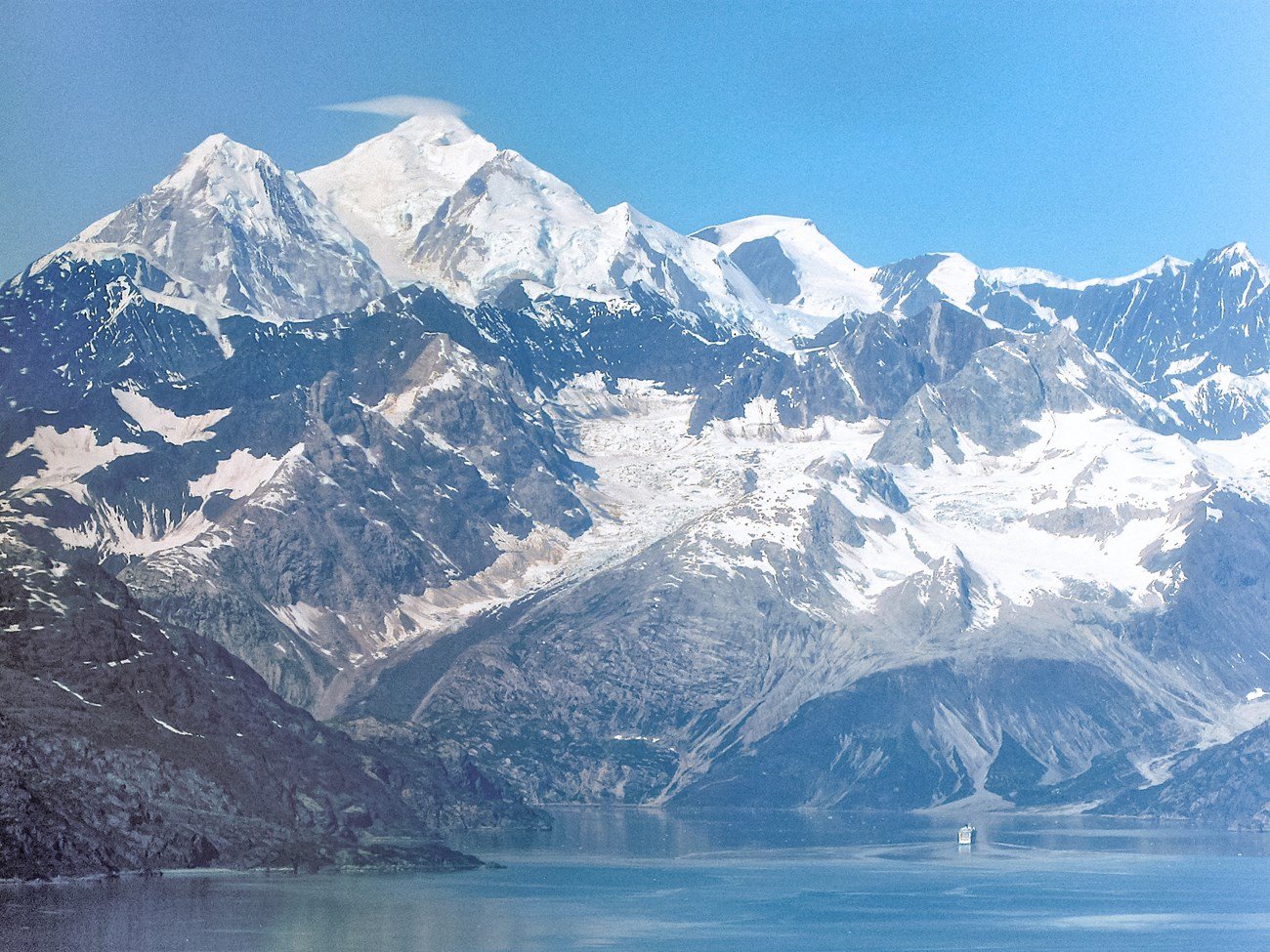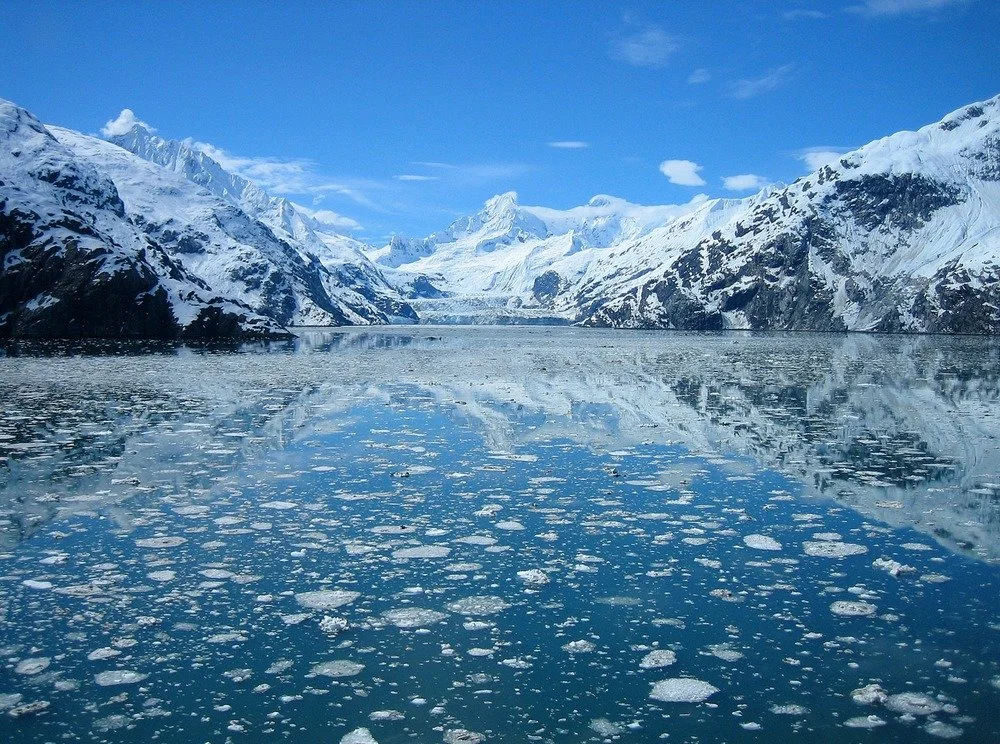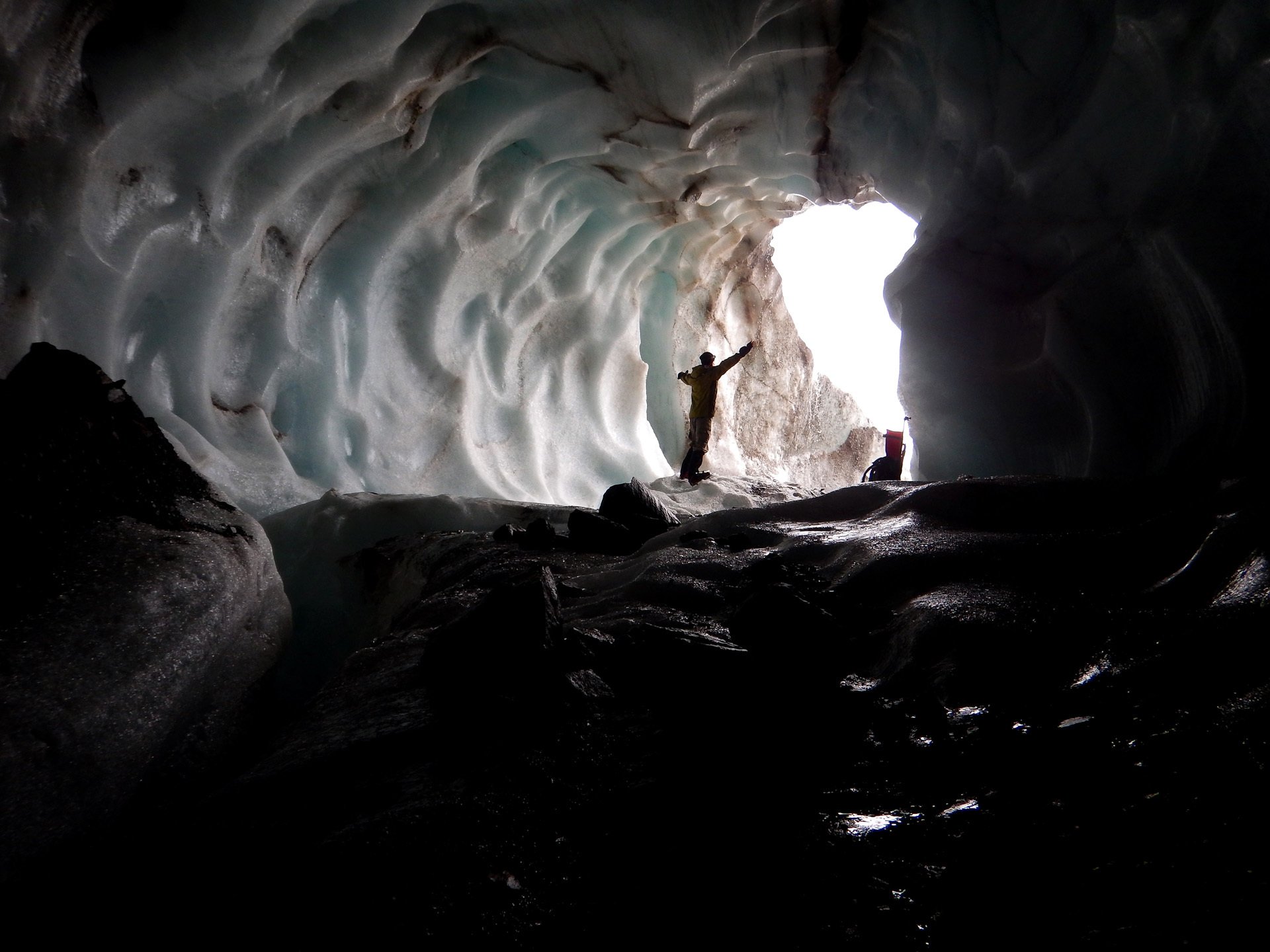Glacier Bay National Park (Alaska)
In the pristine wilderness of southeastern Alaska, Glacier Bay National Park and Preserve is a breathtaking expanse of natural beauty, characterized by awe-inspiring glaciers, rugged mountains, and thriving marine ecosystems. This captivating park, renowned for its stunning ice formations and abundant wildlife, offers visitors a chance to explore a world of unparalleled beauty and profound geological history.
Established as a national park in 1980, Glacier Bay encompasses more than 3.3 million acres of diverse terrain, including vast stretches of temperate rainforest, towering peaks, and deep fjords carved by ancient glaciers. The park's iconic tidewater glaciers, some of which stretch for miles, are among the most active and accessible in the world, providing visitors with a rare opportunity to witness the raw power of nature at work.
Glacier Bay National Park and Preserve is home to an incredible array of plant and animal life, which has adapted to thrive in the park's challenging environment. Iconic marine species such as humpback whales, orcas, and sea lions are among the park's most cherished residents, while the skies are patrolled by majestic bald eagles and countless seabird species. The park's diverse habitats provide a refuge for a variety of terrestrial species, including bears, mountain goats, and wolves.
Visitors to Glacier Bay National Park and Preserve can partake in a wide range of recreational activities that showcase the park's unmatched beauty. The park offers numerous opportunities for hiking, wildlife viewing, and fishing, allowing guests to immerse themselves in the diverse landscapes that define Glacier Bay. Kayaking and boating are popular ways to explore the park's coastal waters and fjords, while scenic flightseeing tours provide a bird's-eye view of the park's breathtaking scenery.
The nearby community of Gustavus serves as a gateway to Glacier Bay National Park and Preserve, offering a variety of accommodations, dining options, and local attractions. This charming Alaskan town ensures that every visitor can experience the park's remarkable beauty in comfort and style.
MUST SEE SITES
Glacier Bay: This stunning bay located in the heart of Glacier Bay National Park is home to a variety of glaciers, including the massive Margerie Glacier and the Grand Pacific Glacier. Visitors can take a guided boat tour and observe the park's unique landscape up close, including towering icebergs and stunning coastal scenery.
Bartlett Cove: This scenic cove located in the southern part of Glacier Bay National Park is home to the park's visitor center and offers visitors a chance to learn about the park's rich history and diverse ecosystem. Visitors can explore several hiking trails that wind through the surrounding forests and offer stunning views of the surrounding bay and mountains.
John Muir Glacier: This massive glacier located in the northern part of Glacier Bay National Park is one of the park's most iconic landmarks. Visitors can take a guided boat tour or hike along several trails that offer stunning views of the glacier and the surrounding wilderness.
Beardslee Islands: This remote group of islands located in the northern part of Glacier Bay National Park offers visitors a chance to explore a unique and pristine landscape of rugged mountains, coastal forests, and rocky beaches. Visitors can take a guided boat tour or kayak through the area, which is home to a wide variety of wildlife, including sea lions, otters, and eagles. With its secluded location and hidden treasures, Beardslee Islands are a must-see for any visitor to Glacier Bay National Park.
Whale Watching: Glacier Bay National Park and Preserve is home to a variety of marine life, including humpback whales, sea lions, and otters. Visitors can take a guided boat tour to witness these incredible creatures up close, or simply explore the area's shoreline and witness the stunning views of the surrounding landscape.
GETTING THERE
The most common way to arrive at Glacier Bay National Park is by air and by sea. The nearest airports are the Juneau International Airport and the Gustavus Airport, both of which offer daily flights from several cities in Alaska, including Seattle, Anchorage, and Ketchikan.
Once you arrive in Gustavus, you can take a ferry or charter boat to the park. The ferry ride from Gustavus to Glacier Bay National Park takes about 1-2 hours, and offers stunning views of the surrounding wilderness and wildlife.
Once you arrive at Glacier Bay National Park, the best way to get around is by boat or kayak. The park is home to numerous glaciers and fjords, and there are several boat tours and kayak rentals available for exploring the park's many waterways. There are also several hiking trails available for exploring the park's many ecosystems and wildlife.
GATEWAY COMMUNITIES
The town of Gustavus serves as the primary gateway community to Glacier Bay National Park and Preserve, offering various accommodations, dining options, and outdoor recreation equipment rentals. The park is accessible by air or water, with flights from Juneau to Gustavus and ferry services also available.
ACCOMMODATIONS
Visitors can find various lodging options in Gustavus, including hotels, lodges, and vacation rentals. The park itself features the Glacier Bay Lodge, providing accommodations within the park boundaries. Additionally, campgrounds are available, such as the Bartlett Cove Campground, which offers tent sites.
CAMPGROUNDS
Glacier Bay has one developed campground, the Bartlett Cove Campground, which is located near the park's primary visitor center. It offers tent sites and basic amenities like restrooms, potable water, and bear-proof food storage lockers. There are also numerous backcountry camping options within the park, which require permits and adherence to Leave No Trace principles.
WEATHER/CLIMATE
Glacier Bay has a coastal temperate climate, with cool summers and mild winters. Average summer temperatures range from the 40s to 60s Fahrenheit, while winter temperatures can range from the 20s to 40s. Visitors should be prepared for potential rain, as the park experiences significant precipitation throughout the year.
RECREATION OPPORTUNITIES
Numerous recreational opportunities await visitors, including wildlife viewing, boat tours, kayaking, and hiking. The park's most popular activity is taking a day cruise to view the tidewater glaciers and abundant marine wildlife. Kayaking is also a popular way to explore the park's fjords and inlets. Wildlife viewing is a major draw, with a variety of marine mammals, bird species, and land animals inhabiting the area.
VISITOR CENTER
The Glacier Bay National Park and Preserve Visitor Center is located within the park at Bartlett Cove. It provides information about the park's history, ecology, wildlife, and recreational opportunities. Rangers are available to offer guidance and answer questions. The visitor center is open daily during the summer season, with reduced hours and services during the off-season.
THINGS TO KNOW
Entrance Fee: There is no entrance fee for Glacier Bay National Park and Preserve.
Pet Policy: Pets are allowed in the park but must be leashed and under control at all times. Pets are not allowed on park trails, beaches, or in the backcountry. They are permitted in the Bartlett Cove Developed Area and on boats.
Hours of operation: The park is open year-round, 24 hours a day, 7 days a week. Visitor centers and certain facilities have specific operating hours, which can be found on the park's website.
Website: https://www.nps.gov/glba/index.htm
Contact phone number: (907) 697-2230
Address: Glacier Bay National Park and Preserve, Gustavus, AK 99826, United States
